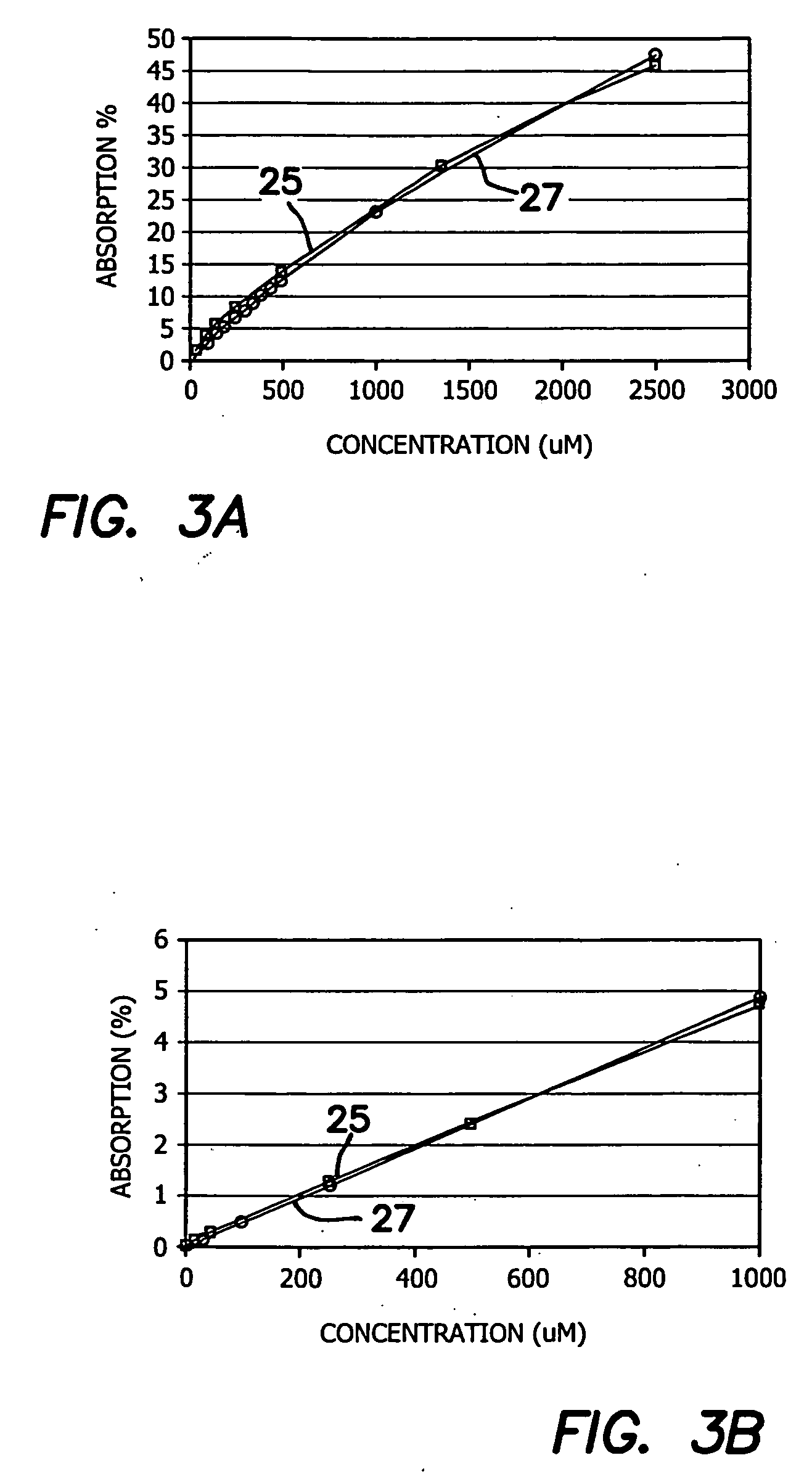Method and apparatus for CMOS imagers and spectroscopy
a spectroscopic and optical imaging technology, applied in the field of spectroscopy, can solve the problems of reducing the minimum size of such optical analysis systems, limiting the spectral resolution of grating-based spectrometer geometries, and many semiconductor-based microfluidic structures previously proposed, and unable to perform optical analysis of device contents in the visible and near-uv spectral ranges
- Summary
- Abstract
- Description
- Claims
- Application Information
AI Technical Summary
Benefits of technology
Problems solved by technology
Method used
Image
Examples
Embodiment Construction
[0052] CMOS Absorption Spectroscopy
[0053] Consider first the general concept of CMOS absorption spectroscopy. The external optical excitation and read-out devices described in the illustrated embodiment include a 588 nm light emitting diode 10 and a CMOS camera chip 12. One key difference between an absorption spectroscopy measurement system and a more conventional cell-sorting system is that no lenses are used for imaging in the absorption spectroscopy measurement system. This simple approach to reducing the size of a spectroscopic imaging system eliminates the need for focusing optics by placing the microfluidic devices 14 directly onto the CMOS camera chip or imaging detector array 12.
[0054] The imaging detector array 12 in one embodiment is comprised of silicon-based avalanche photodiodes (APDs), charge coupled devices (CCDs), or CMOS integrated p-n diode sensors. All of these devices are commercially available at reasonable costs. CCD arrays, although in general more sensitiv...
PUM
 Login to View More
Login to View More Abstract
Description
Claims
Application Information
 Login to View More
Login to View More - R&D
- Intellectual Property
- Life Sciences
- Materials
- Tech Scout
- Unparalleled Data Quality
- Higher Quality Content
- 60% Fewer Hallucinations
Browse by: Latest US Patents, China's latest patents, Technical Efficacy Thesaurus, Application Domain, Technology Topic, Popular Technical Reports.
© 2025 PatSnap. All rights reserved.Legal|Privacy policy|Modern Slavery Act Transparency Statement|Sitemap|About US| Contact US: help@patsnap.com



